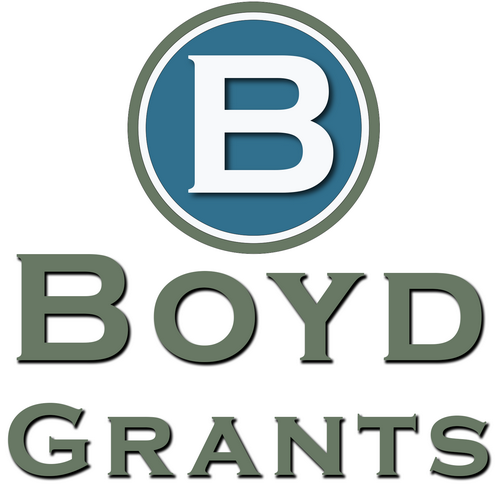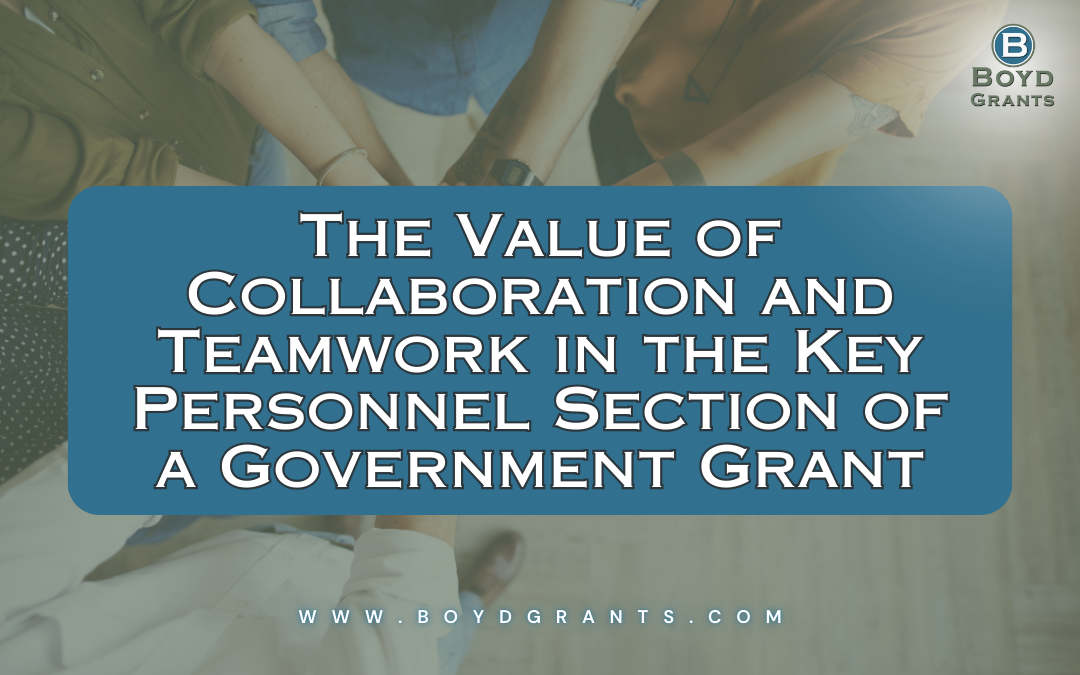Collaboration and teamwork are pivotal in government grant projects, where success often hinges on the seamless integration of diverse expertise, skills, and roles. The Key Personnel Section is the ideal place to demonstrate how the project team embodies these principles. Below is a detailed exploration of why collaboration and teamwork are so valuable in this context.
1. Enhances Project Feasibility and Execution
Government grant projects are typically large-scale initiatives requiring the integration of multiple disciplines and perspectives.
- Streamlined Problem-Solving: Teams with collaborative skills can address challenges more effectively by pooling knowledge and perspectives.
- Interdisciplinary Synergy: Collaboration allows for the blending of expertise (e.g., technical, managerial, and community engagement), ensuring comprehensive solutions.
- Reduced Silos: A team with a demonstrated culture of teamwork is less likely to operate in isolation, fostering better communication and coordination.
2. Signals Effective Resource Management
Grant reviewers look for evidence that the project team can efficiently use the resources and funding provided.
- Complementary Roles: A well-structured team ensures no overlap of responsibilities and demonstrates efficient use of each team member’s expertise.
- Example: A Principal Investigator focuses on leadership and vision, while a Project Manager handles day-to-day logistics.
- Optimized Expertise: Collaboration ensures that the right expertise is applied to the right tasks at the right time, maximizing project efficiency.
3. Improves Project Outcomes Through Shared Expertise
Teams that value collaboration can leverage each member’s strengths to enhance the quality and impact of the project.
- Innovative Approaches: Collaborative brainstorming fosters innovation, leading to more creative and effective solutions.
- Knowledge Sharing: Teamwork allows for the exchange of ideas, skills, and best practices, benefiting the entire project.
- Peer Learning: Team members can learn from one another, improving individual and collective performance over the project’s duration.
4. Demonstrates Capacity for Stakeholder Engagement
Many government grants emphasize community engagement and multi-stakeholder collaboration. A team that exemplifies strong internal teamwork signals its ability to work effectively with external partners as well.
- Building Partnerships: Collaborative teams are better positioned to establish and maintain relationships with stakeholders, such as community organizations or government agencies.
- Facilitating Buy-In: Teams that work well together can more effectively engage and inspire stakeholders, ensuring broad support for the project.
5. Increases Resilience to Challenges
Large projects inevitably encounter unforeseen challenges, and teamwork is critical for navigating them successfully.
- Adaptive Capacity: Teams that communicate well and collaborate are more agile in addressing problems as they arise.
- Shared Responsibility: Challenges are less daunting when the team can rely on shared decision-making and mutual support.
6. Demonstrates Leadership and Vision
Collaboration highlights the leadership’s ability to bring together diverse talents and unite them under a shared vision.
- Leadership as a Catalyst: A strong leader fosters a collaborative environment where all team members feel valued and motivated.
- Team Unity: Grant reviewers want assurance that the team is aligned and working toward common goals, minimizing the risk of conflict or inefficiency.
7. Highlights Organizational Capacity and Readiness
A team with a proven track record of collaboration demonstrates organizational capacity and readiness to implement the proposed project.
- Case Studies or Examples: Including examples of successful collaborative projects in the Key Personnel Section shows grant reviewers that the team has a history of working well together.
8. Builds Confidence in Long-Term Sustainability
Government grants often aim to fund projects with lasting impacts. A team that values collaboration is better equipped to sustain the project beyond the funding period.
- Shared Ownership: Collaborative teams are more likely to take collective responsibility for the project’s success, fostering long-term commitment.
- Capacity Building: Teamwork helps build the internal capacity of the organization, ensuring it can continue the work independently in the future.
How to Showcase Collaboration and Teamwork in the Key Personnel Section
- Highlight Team Structure and RolesClearly define each team member’s role and demonstrate how their contributions complement one another.
- Example: “The Project Manager will oversee daily operations, while the Principal Investigator ensures alignment with strategic goals. Co-investigators will contribute specific expertise in data analysis and community engagement.”
- Include Evidence of Past CollaborationReference previous projects where the team worked together successfully.
- Example: “This team previously collaborated on a federally funded project addressing urban heat islands, which resulted in the implementation of sustainable cooling solutions across 10 communities.”
- Emphasize Interdisciplinary ExpertiseShow how the team’s diverse skills come together to address the project’s objectives comprehensively.
- Example: “The team combines expertise in engineering, public health, and environmental justice to design an inclusive, community-focused solution.”
- Use Metrics to Demonstrate SuccessIf applicable, include quantitative data about the outcomes of collaborative efforts.
- Example: “Through effective teamwork, the project team exceeded initial goals, reducing water waste by 25% in the first year.”
By emphasizing collaboration and teamwork, the Key Personnel Section demonstrates that the project is backed by a cohesive, capable team. This reassures grant reviewers that the team can deliver results, overcome challenges, and maximize the grant’s impact.


Recent Comments